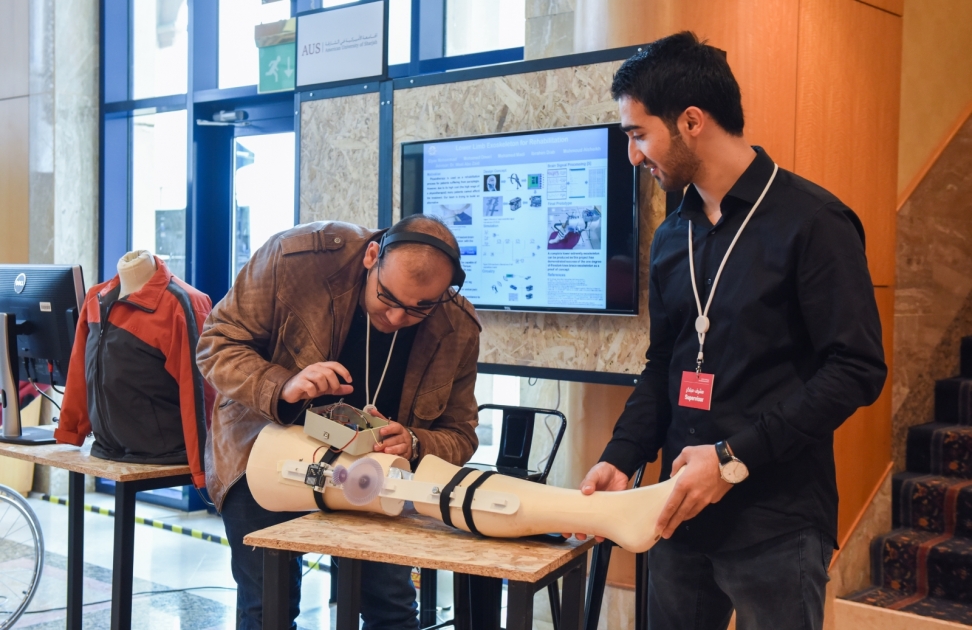
AUS exhibits high-quality innovation projects at Sharjah Innovation Week
Students and faculty members from American University of Sharjah (AUS) are presenting five high-quality projects that provide innovative solutions to real-world challenges at the 2019 Innovation Week currently ongoing at the Sharjah University City Hall. The event is being held as part of the activities of the UAE Innovation Month.
Speaking on the university’s participation in the exhibition, Dr. Mohamed El-Tarhuni, AUS Vice Provost for Graduate Studies, said:
“This is a great opportunity to display some of the innovative projects that AUS students and faculty have been working on during this academic year. The UAE Innovation Month is an excellent event that brings together young innovators to learn from each other and enhance their entrepreneurial skills. AUS students are presenting several projects that focus on the Internet of Things, innovations that provide assistance to patients, and many others that demonstrate AUS’s focus on advancing research activities within the university and providing a hands-on learning environment to the students.”
The projects developed at AUS include the following:
- A 3D-printed, cost-effective caged drone designed, manufactured and programmed to move through industrial-sized HVAC ducts by rolling and hovering motion to detect thermal leaks and blockages. Air conditioning contributes to most of electricity consumption in buildings. Leakages or blockages in the HVAC system, thus, result in energy losses up to 33 percent, reducing efficiency and increasing operation costs. The maintenance of HVAC ducts, however, is expensive, time consuming and potentially impossible due to the inability to localize faults.
- A wheelchair that allows people with paralysis to stand up and move uphill without help from others.
- An integrated system that detects patient falls in hospitals by classifying motions into “fall and not-fall”. The proposed system is a wearable and wireless device that consists of a camera module, gyroscope and accelerometer connected to a Raspberry Pi microcomputer for interfacing.
- A brain-controlled, lower extremity, biomedical exoskeleton for paraplegic patients that was developed to help aid in the physiotherapy process of paraplegic patients’ recovery to ensure their recovery via mind-controlled signals.
- Students used special apps to shoot, edit and publish news stories with the same quality standards attained by using professional equipment.


























